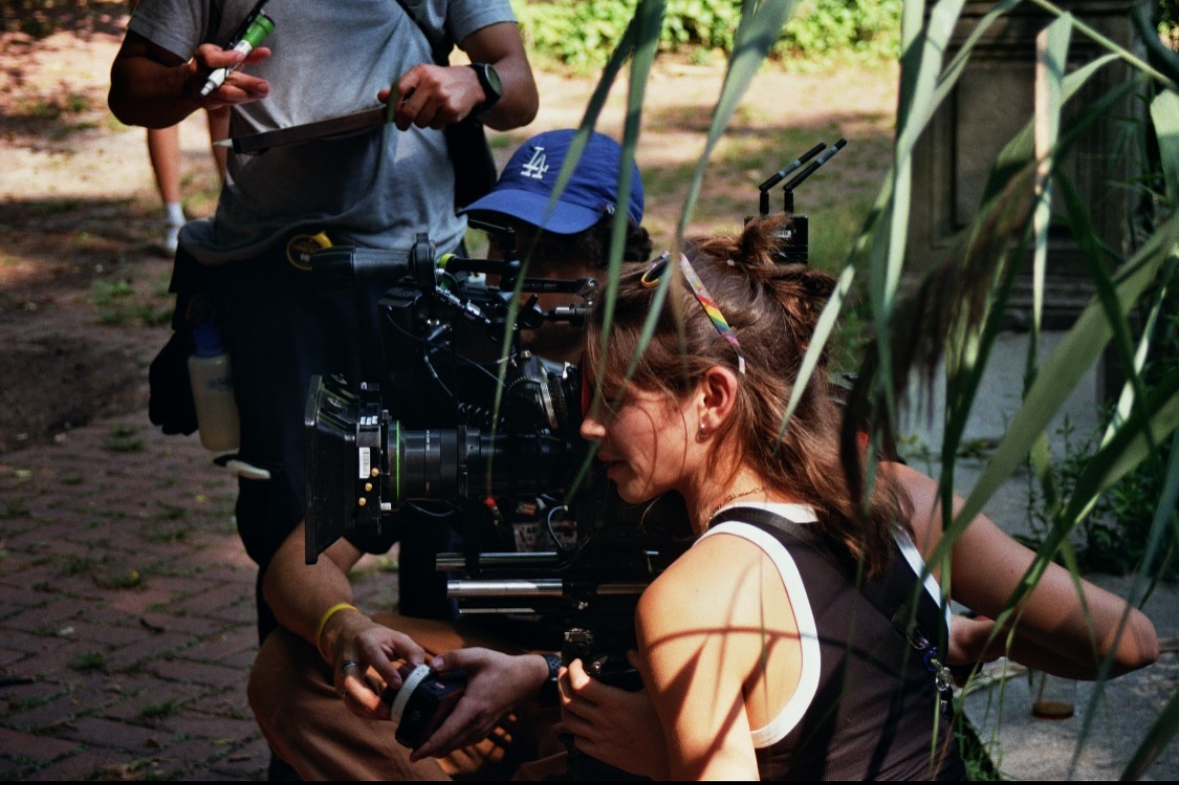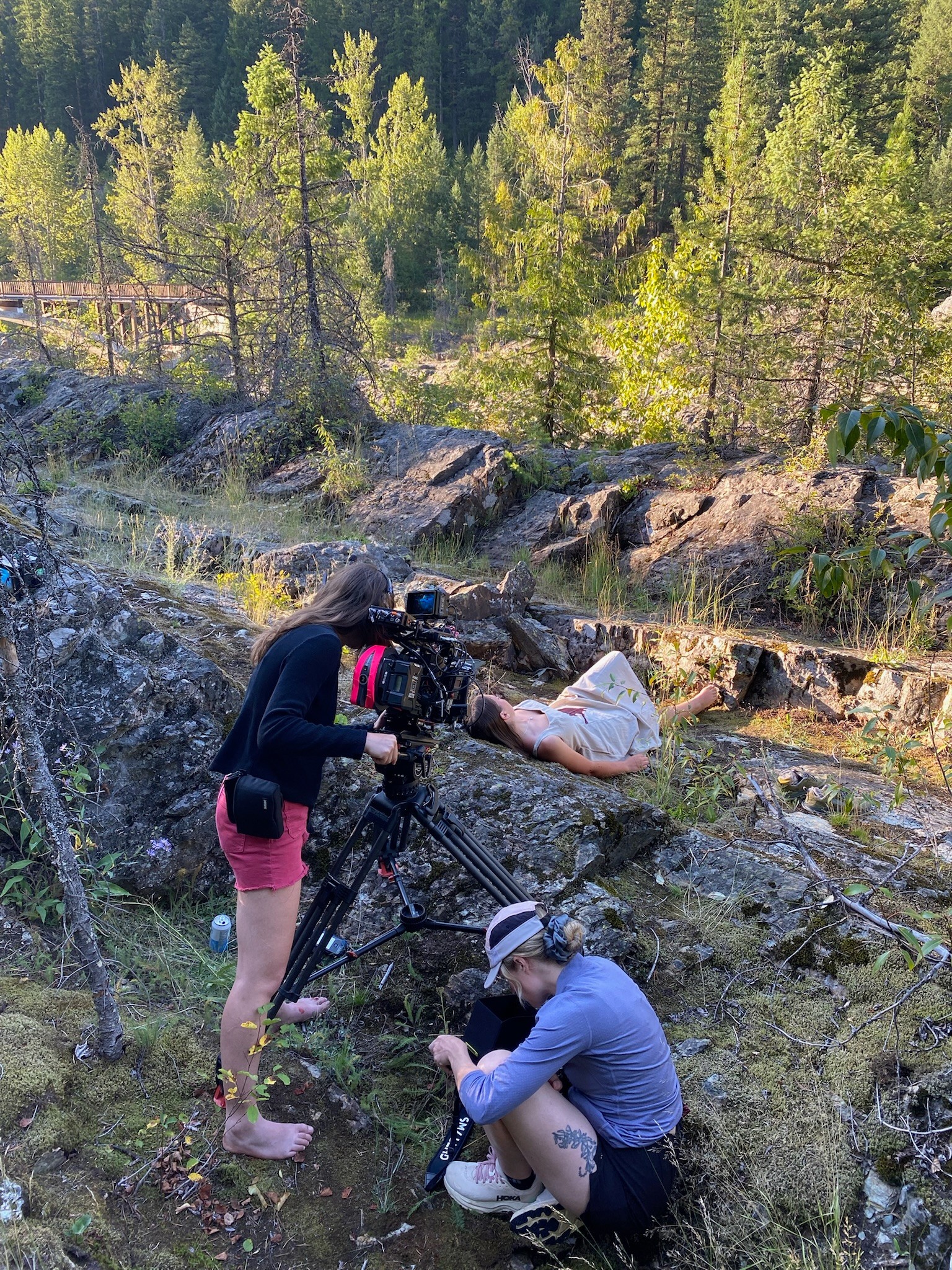We recently connected with Quinn Thomashow and have shared our conversation below.
Hi Quinn , thanks for joining us today. We’d love to hear the backstory behind a risk you’ve taken – whether big or small, walk us through what it was like and how it ultimately turned out.
I think that being a creative inevitably means that you have to be comfortable taking risks. It is an inherent part of making art, and having the illusion that somehow and someway this is going to work out. I think vulnerability is inherently risky, yet it might be the most rewarding thing a person can be/do. I have taken many risks in my creative life, I feel.
Before becoming a cinematographer, I was mostly in the world of experimental filmmaking. I studied this primarily at Hampshire College, where we designed our own majors. In my final year at Hampshire, I decided to join a band and go on tour and teach what I called “camera-less film workshops” along the way. A lot of this came out of my questions surrounding the accessibility of experimental filmmaking. This somewhat abstract form of art is often shown in museums or higher education classrooms and while I think anyone can engage with these works and find them meaningful, we aren’t all granted the tools or language to really participate in the conversation. In reflecting on this, I decided that I wanted to find a way to make experimental film more accessible and what better way to then bringing random people into the process itself.
So, college-age Quinn and her bandmates set off. At each stop, I sang with the band and then immediately taught a workshop where people got to draw directly onto celluloid. I had to quickly build trust with random people in the world and bring them into a process of expression they might never have had access to. The action was pure hustle and faith, managing the logistics of the tour while also collecting, organizing, and preserving hundreds of fragile pieces of film.
In the end, I collected the camera-less work of over 200 people. I edited all their pieces into one massive, collective film that I ultimately projected onto the front of my parents’ house—a final, accessible gesture. The ultimate reward of this “risk” was the human connection. This experience fundamentally shaped my approach to cinematography today. I learned that the best creative projects are those that successfully bridge a technical process with genuine, collaborative human expression. I now carry that conviction—to seek out new perspectives and find innovative ways to execute a shared vision—into every set I work on

Quinn , love having you share your insights with us. Before we ask you more questions, maybe you can take a moment to introduce yourself to our readers who might have missed our earlier conversations?
My journey into visual storytelling is rooted in two distinct worlds: growing up on a farm in rural Vermont – a childhood of constant world building, and deep connection to the natural world – and an intensive technical background in experimental filmmaking and cinematography.
My cinematography and visual storytelling spans across narrative film, music videos, documentary, commercials and even video installation art, I have been lucky to be known for my ability to shoot on celluloid and my experimental background. I think my style is defined by a commitment to externalizing the internal. I like to use light, color, and composition to articulate the subtext and emotional landscape of characters. My background in experimental film has allowed me to be to be highly resourceful and incorporate unconventional techniques into grounded, narrative structures.
I love that I get to collaborate with such unique, and passionate people everyday on set. My job allows me to get to be a part of a directors vision and learn more about the world around me and others experiences. You learn to listen to others, to think on your feet, to think ahead about what problems may arise and approach each step with a solution rather than defeat. It is a job of collaboration and humanity and I hope I get to be doing it for a very long time. This career makes me a better person.

Is there a particular goal or mission driving your creative journey?
My deepest personal and professional goal is Empathy. I know it can sound soft, but to me, empathy is the most powerful, active ingredient in both art and life, and it has the strength to genuinely shift the world.
I vividly recall a lesson from my professor, Bill Dill, at the American Film Institute. He told us that in every film, we might not like all of our characters or their choices, but we still need to learn how to love them.
That idea stuck with me. It’s not about excusing bad behavior; it’s about acknowledging the complex human mechanisms that drive conflict. As a cinematographer, my job is visualize the internal truth of every character—the good, the bad, and the broken. If we can build visual empathy for all people on screen, we create deeper, more meaningful connections with our audience, and perhaps, inspire more understanding in the world.

Are there any resources you wish you knew about earlier in your creative journey?
In all honesty, I think the most valuable resource in following a creative path is your community and the ability to ask for help. I think in an industry like filmmaking, we are often given an illusion that we need to be competitive with one another to succeed. But, what I have found is that it is the knowledge and success of others around you that lifts you up in the process.
I think this lesson really got instilled in me particularly in graduating from AFI. I have relied heavily on other cinematographers to inspire me, help me find the answers when I don’t know them or remind me of where I can improve. I think this has been my biggest resource and I hope that everyone can tap into their community and find this as well. There is enough to go around, and helping one another is the most rewarding and meaningful tool in the long run.
Contact Info:
- Website: https://www.quinnthomashow.com
- Instagram: @quinnthomashow



